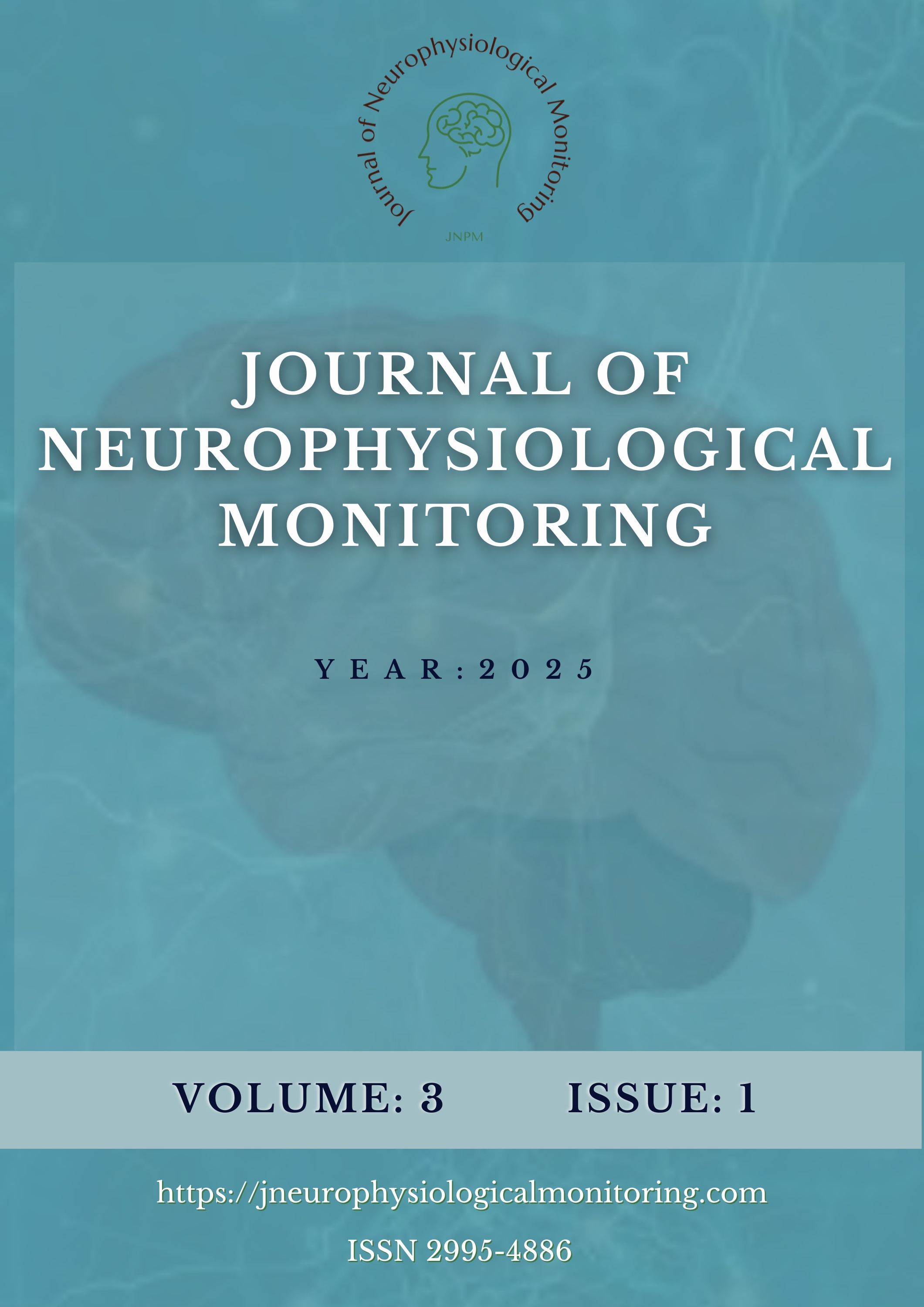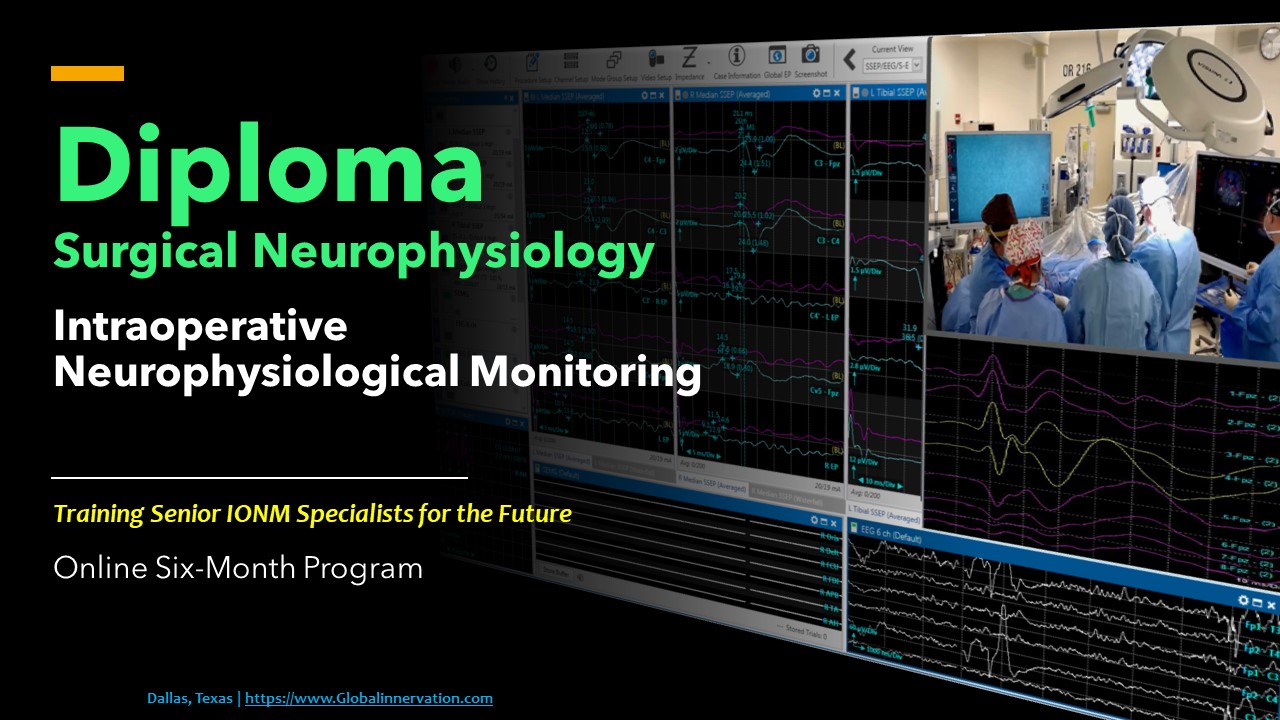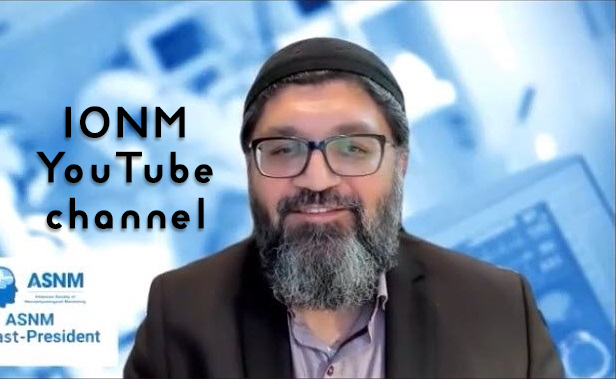Evaluating the Effectiveness of Intraoperative Neuromonitoring Modalities in Spinal Dysraphism Surgeries: A Systematic Review
DOI:
https://doi.org/10.5281/zenodo.14786910Keywords:
Spinal dysraphism, meningocele, myelomeningocele, tethered spinal cord, scoliosis, , bulbocavernosus reflex, multimodality, IONM, SSEP, MEP, EMG, BCR, pudendal, surgeryAbstract
Introduction: Spinal dysraphism encompasses a group of neural tube defects that can lead to significant neurological impairment, necessitating surgical intervention. Intraoperative neurophysiological monitoring (IONM) is integral to preserving neurological function during these high-risk surgeries. This systematic review evaluates the effectiveness of various IONM modalities, including somatosensory evoked potentials (SSEPs), motor evoked potentials (MEPs), electromyography (EMG), and bulbocavernosus reflex (BCR), in reducing postoperative deficits.
Methods: A systematic review of the PubMed database from 1998 to 2024 was conducted per PRISMA guidelines. The keywords used in the research included “spinal dysraphism,” “IONM,” “neuromonitoring,” “spina bifida,” “pediatric,” “surgery,” and “neurosurgery.” Inclusion criteria specified that only English-language studies with at least 10 patients focused on IONM use in meningocele, myelomeningocele, and tethered spinal cord surgeries. Exclusion criteria ruled out reviews, case reports, conference abstracts, and animal studies. Neuromonitoring data were analyzed for efficacy in reducing postoperative neurological deficits compared to non-IONM surgeries.
Results: From 1,492 surgeries analyzed, 1,227 employed IONM, yielding a 7.25% postoperative neurological deficit rate compared to 15% in non-IONM procedures. Among the IONM group, multimodality monitoring consistently showed reduced risks of neurological complications. Variability in true positive and false negative rates among studies highlighted the need for standardized reporting and enhanced sensitivity across modalities.
Discussion: Multimodality IONM substantially reduces postoperative deficits, though its sensitivity and specificity require further refinement. Emerging techniques targeting sacral and autonomic pathways, such as pudendal nerve SSEPs and urinary bladder EMG and MEPs, offer promising advancements for comprehensive neural monitoring.
Conclusion: IONM significantly enhances surgical outcomes in spinal dysraphism by reducing postoperative neurological deficits. Standardized metrics, multimodal approaches, and innovation in monitoring techniques are essential to optimizing patient care. Future research should prioritize large-scale, controlled trials to validate these findings and enhance best practices.
References
R. J. Martin and A. A. Fanaroff, Fanaroff and Martin’s Neonatal - Perinatal Medicine, Twelfth., 2 vols.
W. Iftikhar and O. De Jesus, “Spinal Dysraphism and Myelomeningocele (Archived),” StatPearls, Aug. 2023, [Online]. Available: https://www-ncbi-nlm-nih-gov.icom.idm.oclc.org/books/NBK557722/
C. M. Brea and S. Munakomi, “Spina Bifida,” StatPearls, Aug. 2023, [Online]. Available: https://www-ncbi-nlm-nih-gov.icom.idm.oclc.org/books/NBK559265/
N. Venkataramana, “Spinal dysraphism,” J. Pediatr. Neurosci., vol. 6, no. 3, p. 31, 2011, doi : 10.4103/1817-1745.85707.
B. Trapp et al., “A Practical Approach to Diagnosis of Spinal Dysraphism,” RadioGraphics, vol. 41, no. 2, pp. 559–575, Mar. 2021, doi: 10.1148/rg.2021200103.
T. Karsonovich, A. A. Alruwaili, and J. M. Das, “Myelomeningocele,” StatPearls, Nov. 2024, [Online]. Available: https://www.ncbi.nlm.nih.gov/books/NBK546696/
M. A. Gadhvi, A. Baranwal, S. Srivastav, M. Garg, D. K. Jha, and A. Dixit, “Use of Multimodality Intraoperative Neuromonitoring in Tethered Cord Syndrome – Experience from a Tertiary Care Center,” Maedica - J. Clin. Med., vol. 18, no. 3, Sep. 2023, doi: 10.26574/maedica.2023.18.3.399.
M. McGrath et al., “Intraoperative neuromonitoring potentials and evidence of preserved neuronal circuitry below the anatomical and functional level in patients with complex spinal dysraphism undergoing detethering reoperations,” J. Neurosurg. Pediatr., vol. 33, no. 5, pp. 411–416, May 2024, doi: 10.3171/2023.11. PEDS23424.
F. R. Jahangiri, Surgical Neurophysiology - 2nd Edition: A Reference Guide to Intraoperative Neurophysiological Monitoring, 2nd ed. CreateSpace Independent Publishing. [Online]. Available: https://www. amazon.com/Surgical-Neurophysiology-Intraoperative-Neurophysiological-Monitoring/dp/ 147516498X/ref=sr_1_1?ie=UTF8&qid=1536814443&sr=8-1&keywords=faisal+jahangiri.
W. Aleem, E. D. Thuet, A. M. Padberg, M. Wallendorf, and S. J. Luhmann, “Spinal Cord Monitoring Data in Pediatric Spinal Deformity Patients With Spinal Cord Pathology,” Spine Deform., vol. 3, no. 1, pp. 88–94, Jan. 2015, doi: 10.1016/j.jspd.2014.06.011.
S. Cha et al., “Predictive value of intraoperative bulbocavernosus reflex during untethering surgery for post-operative voiding function,” Clin. Neurophysiol., vol. 129, no. 12, pp. 2594–2601, Dec. 2018, doi: 10.1016/j.clinph.2018.09.026.
Y. Sapir, N. Buzaglo, A. Korn, S. Constantini, J. Roth, and S. Rochkind, “Dynamic mapping using an electrified ultrasonic aspirator in lipomyelomeningocele and spinal cord detethering surgery—a feasibility study,” Childs Nerv. Syst., vol. 37, no. 5, pp. 1633–1639, May 2021, doi: 10.1007/s00381-020-05012-8.
G. Squintani et al., “Intraoperative Neurophysiological Monitoring in Tethered Cord Syndrome Surgery: Predictive Values and Clinical Outcome,” J. Clin. Neurophysiol., Jun. 2024, doi: 10.1097/WNP.0000000000001096.
Y. G. Yi et al., “Feasibility of intraoperative monitoring of motor evoked potentials obtained through transcranial electrical stimulation in infants younger than 3 months,” J. Neurosurg. Pediatr., vol. 23, no. 6, pp. 758–766, Jun. 2019, doi: 10.3171/2019.1. PEDS18674.
E. Durdağ, P. B. Börcek, Ö. Öcal, A. Ö. Börcek, H. Emmez, and M. K. Baykaner, “Pathological evaluation of the filum terminale tissue after surgical excision,” Childs Nerv. Syst., vol. 31, no. 5, pp. 759–763, May 2015, doi: 10.1007/s00381-015-2627-4.
J. Guo, X. Zheng, H. Leng, Q. Shen, and J. Pu, “Application of neurophysiological monitoring during tethered cord release in children,” Childs Nerv. Syst., vol. 40, no. 9, pp. 2921–2927, Sep. 2024, doi: 10.1007/s00381-024-06483-9.
J. Jiang et al., “Clinical observations on the release of tethered spinal cord in children with intra-operative neurophysiological monitoring: A retrospective study,” J. Clin. Neurosci., vol. 71, pp. 205–212, Jan. 2020, doi: 10.1016/j.jocn.2019.07.080.
V. Leung, J. Pugh, and J. A. Norton, “Utility of neurophysiology in the diagnosis of tethered cord syndrome,” J. Neurosurg. Pediatr., vol. 15, no. 4, pp. 434–437, Apr. 2015, doi: 10.3171/2014.10. PEDS1434.
K. Kobayashi et al., “Efficacy of Anal Needle Electrodes for Intraoperative Spinal Cord Monitoring with Transcranial Muscle Action Potentials,” Asian Spine J., vol. 12, no. 4, pp. 662–668, Aug. 2018, doi: 10.31616/asj.2018.12.4.662.
M. Biscevic, A. Sehic, and F. Krupic, “Intraoperative neuromonitoring in spine deformity surgery: modalities, advantages, limitations, medicolegal issues – surgeons’ views,” EFORT Open Rev., vol. 5, no. 1, pp. 9–16, Jan. 2020, doi: 10.1302/2058-5241.5.180032.
Z. Rodi and D. B. VodusÏek, “Intraoperative monitoring of the bulbocavernosus re¯ex: the method and its problems,” Clin. Neurophysiol., 2001.
T. Finger et al., “Secondary tethered cord syndrome in adult patients: retethering rates, long-term clinical outcome, and the effect of intraoperative neuromonitoring,” Acta Neurochir. (Wien), vol. 162, no. 9, pp. 2087–2096, Sep. 2020, doi: 10.1007/s00701-020-04464-w.
G. Fekete, L. Bognár, and L. Novák, “Surgical treatment of tethered cord syndrome—comparing the results of surgeries with and without electrophysiological monitoring,” Childs Nerv. Syst., vol. 35, no. 6, pp. 979–984, Jun. 2019, doi: 10.1007/s00381-019-04129-9.
V. P. Maurya, M. Rajappa, V. Wadwekar, S. K. Narayan, D. Barathi, and V. S. Madhugiri, “Tethered Cord Syndrome–A Study of the Short-Term Effects of Surgical Detethering on Markers of Neuronal Injury and Electrophysiologic Parameters,” World Neurosurg., vol. 94, pp. 239–247, Oct. 2016, doi: 10.1016/j.wneu.2016.07.005.
M. A. Alvi et al., “Accuracy of Intraoperative Neuromonitoring in the Diagnosis of Intraoperative Neurological Decline in the Setting of Spinal Surgery—A Systematic Review and Meta-Analysis,” Glob. Spine J., vol. 14, no. 3_suppl, pp. 105S-149S, Mar. 2024, doi: 10.1177/21925682231196514.
H. H. Choi, E. J. Ha, W.-S. Cho, H.-S. Kang, and J. E. Kim, “Effectiveness and Limitations of Intraoperative Monitoring with Combined Motor and Somatosensory Evoked Potentials During Surgical Clipping of Unruptured Intracranial Aneurysms,” World Neurosurg., vol. 108, pp. 738–747, Dec. 2017, doi: https://doi.org/10.1016/j.wneu.2017.09.096.
M. Schaan, B. Boszczyk, G. Kramer, M. Günther, M. Stöhrer, and H. Jaksche, “Intraoperative urodynamics in spinal cord surgery: a study of feasibility,” Eur. Spine J., vol. 13, no. 1, pp. 39–43, Feb. 2004, doi: 10.1007/s00586-003-0619-7.
F. R. Jahangiri, J. W. Silverstein, C. Trausch, S. A. Eissa, Z. M. George, and H. DeWal, “Motor Evoked Potential Recordings from the Urethral Sphincter Muscles (USMEPs) during Spine Surgeries,” Neurodiagnostic J., vol. 59, no. 1, pp. 34–44, Mar. 2019.
H. Lueders, R. P. Lesser, J. Hahn, D. S. Dinner, and G. Klem, “Cortical somatosensory evoked potentials in response to hand stimulation,” J. Neurosurg., vol. 58, no. 6, pp. 885–894.
L. G. Valentini et al., “Occult spinal dysraphism: lessons learned by retrospective analysis of 149 surgical cases about natural history, surgical indications, urodynamic testing, and intraoperative neurophysiological monitoring,” Childs Nerv. Syst., vol. 29, no. 9, pp. 1657–1669, Sep. 2013, doi: 10.1007/s00381-013-2186-5.
M. Akhmediev, G. Alikhodjaeva, O. Usmankhanov, T. Akhmediev, and M. Norov, “Management of split cord malformation and tethered cord syndrome: Experience of a main referral center in Uzbekistan,” Clin. Neurol. Neurosurg., vol. 245, p. 108510, Oct. 2024, doi: 10.1016/j.clineuro.2024.108510.
E. W. Hoving, E. Haitsma, C. M. C. Oude Ophuis, and H. L. Journée, “The value of intraoperative neurophysiological monitoring in tethered cord surgery,” Childs Nerv Syst, vol. 27, no. 9, pp. 1445–1452, Sep. 2011, doi: 10.1007/s00381-011-1471-4.
Mehrotra et al., “Pediatric Lumbosacral Spondylolisthesis: Overcoming the Disability!,” Neurology India, vol. 72, no. 4, pp. 742–746, Jul. 2024, doi: 10.4103/neurol-india.Neurol-India-D-23-00245.
M. Selçuki and K. Coşkun, “Management of tight filum terminale syndrome,” Surgical Neurology, vol. 50, no. 4, pp. 318–322, Oct. 1998, doi: 10.1016/S0090-3019(97)00377-7.
P. Stavrinou et al., “Children with tethered cord syndrome of different etiology benefit from microsurgery—a single institution experience,” Childs Nerv Syst, vol. 27, no. 5, pp. 803–810, May 2011, doi: 10.1007/s00381-010-1374-9.
S. Udayakumaran, N. S. Nair, and M. George, “Intraoperative Neuromonitoring for Tethered Cord Surgery in Infants: Challenges and Outcome,” Pediatr Neurosurg, vol. 56, no. 6, pp. 501–510, 2021, doi: 10.1159/000518123.
F. Yuan, C. Wenjing, L. Yan, and J. Yan, “Intraoperative neurophysiological monitoring in children undergoing tethered cord surgery,” Chinese Medical Journal, vol. 95, no. 21, Jun. 2015, doi: 10.3760/cma.j.issn.0376-2491.2015.21.010.
Downloads
Published
How to Cite
Issue
Section
License
Copyright (c) 2025 J of Neurophysiological Monitoring

This work is licensed under a Creative Commons Attribution 4.0 International License.





